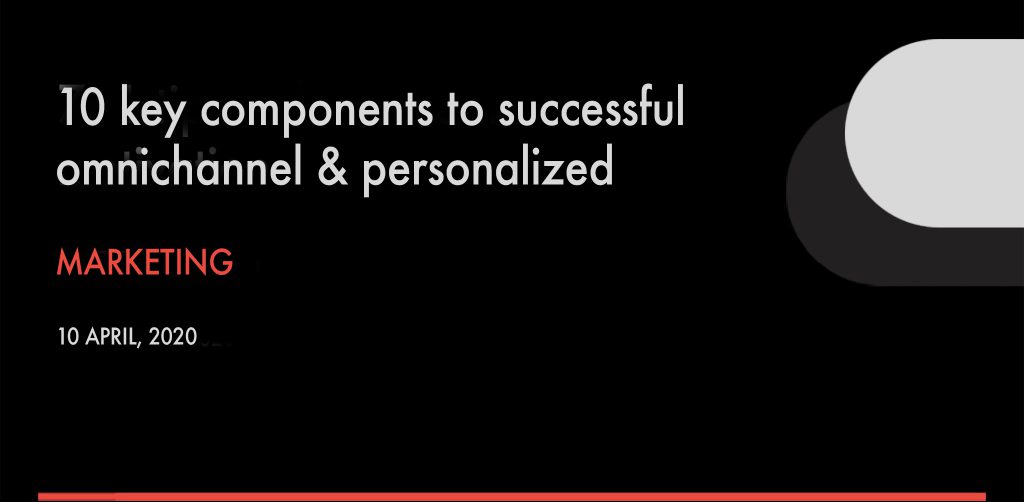10 key components to successful omnichannel & personalized marketing campaigns

- marketing
- April 10, 2020
- Categories: Blog
- Tags: MARKETING
Engaging your customers with omnichannel & personalized campaigns can take some serious effort and planning and is a trial-and-error process that needs solid KPI’s constant optimization to improve its performance at every turn. Check below our highlights for a successful campaign.
Check the 10 key points
Engaging your customers with omnichannel & personalized campaigns can take some serious effort and planning and is a trial-and-error process that needs solid KPI’s constant optimization to improve its performance at every turn. Check below our highlights for a successful campaign.
1. Listening to the customer
Well, it all starts with an old fashioned, simple statement. Are you willing to listen to your customers and be responsive to what the marketplace wants? The information is out there for the taking, to adjust your marketing plan accordingly. Focus on your top-selling products; your top-selling products or services in your business are showing you what your customers want and how you can expand upon them. Survey your customers; make surveys regularly that will make you more intelligent as a business and give you tools to create better solutions. Surveying your audience is one of the best things a business owner can do. asking your customers/clients questions like: ‘’Why do you like us?’’, ‘’Would you be interested in seeing new things?’’, ‘’What is your biggest challenge in the business right now?’’, ‘’What do you like about us?’’, ‘’Any improvements?’’, ‘’Or maybe weaknesses?’’.
2. Segmentation
Leveraging your communication channels with targeted marketing actions that are based on real data about your customers is what you want to do and segmentation is the key here, helping you to pinpoint the best window of opportunity, finding the right market for your campaign in terms of demographics, sales, and your brand’s reputation. This will help you map your customers into different groups and address them separately, through your campaigns’ cycle; use customer data, such as campaign interactions, activity on your website or mobile app, interests or social data, demographics, shopping behavior and send the right content to the right person.
3. Personas and the right audience
Having created these groups, it’s time to get to know the actual persons you want to be talking to; select your audience and build your customer personas. Make a research to know more about their buying habits, behavior, needs and draw their basic characteristics to have in mind when building your campaign’s messaging and then select the right UX and UI design to personalize your content based on your customers’ preferences, site visits, previous orders and wish lists and create more targeted campaigns.
4.Customer journey
Now, how do your customers use your services? Are they returning to the site to complete a buy? Are they using their smartphones or their PC’s? Do they check your factsheets before getting in touch with you? Do they prefer to chat, call you or to fill in the contact form? These are things that you have to take into consideration and integrate this process into your campaign.
5. Architecture
Be aligned with the customer’s journey and also take operational considerations into account, such as traffic, design, format, etc, making sure that your campaign is being built on a solid platform, on an omnichannel approach, where you can choose your preferred channel (Email, SMS, Viber, Push notification, Facebook notification & Chatbot) and your preferred criteria.
6. Content
Make sure that the right content is there, across the funnel throughout the customer journey, like infographics, tutorials, factsheets, whitepapers, and webinars, as well as any other awareness and promotional stuff.
7. Dashboard
Measuring a campaign is more than just attributing sales and justifying marketing spend. Make sure that you have the best possible campaign dashboard, to have some good, real-time intelligence about the progress of your campaign and get some good input for its optimization, in terms of success or performance.
8. Real-Time
Metrics Build in your platform real-time monitoring functions to see what’s working or not. Build your dashboard with all these tools (Google Analytics, short URL’s, coupon code, etc), and detailed statistics on the campaign success (open, clicks, delivery report, popular devices, campaign interactions, activity on your website or mobile app, interests or social data, demographics, etc) that can be used to optimize future campaigns.
9. Knowing the costs
Customer acquisition cost is one of the key metrics of a successful marketing campaign. If you’ve already got this, you can put into the equation parameters as doubling your customer retention time frame, i.e. double your net profit from each customer acquisition or maybe thinking about quality over quantity, i.e. putting $1,000 to buy a $12,000 customer that nets you $4,000, your time would be better spent than if you were investing $50 for a $500 customer. Keep also in mind that targeted personalized campaigns and easily monitor real-time campaign progress can be the key to decrease the marketing costs
10. Optimize
Get a detailed analysis of the overall performance of your campaign to make recommendations for future actions; remember, this is a trial-and-error process!
That’s all then; having said that however, we all know that in a changing landscape, with growing customer expectations and communication channels, being surrounded by a stack of sophisticated tools and tons of content, there can never be an all-in-one recipe for a successful campaign. So, since being successful cannot be guaranteed, being strategic is the only tangible asset while building your campaign, and we hope that we highlighted the key initiatives that you have to take along this direction.